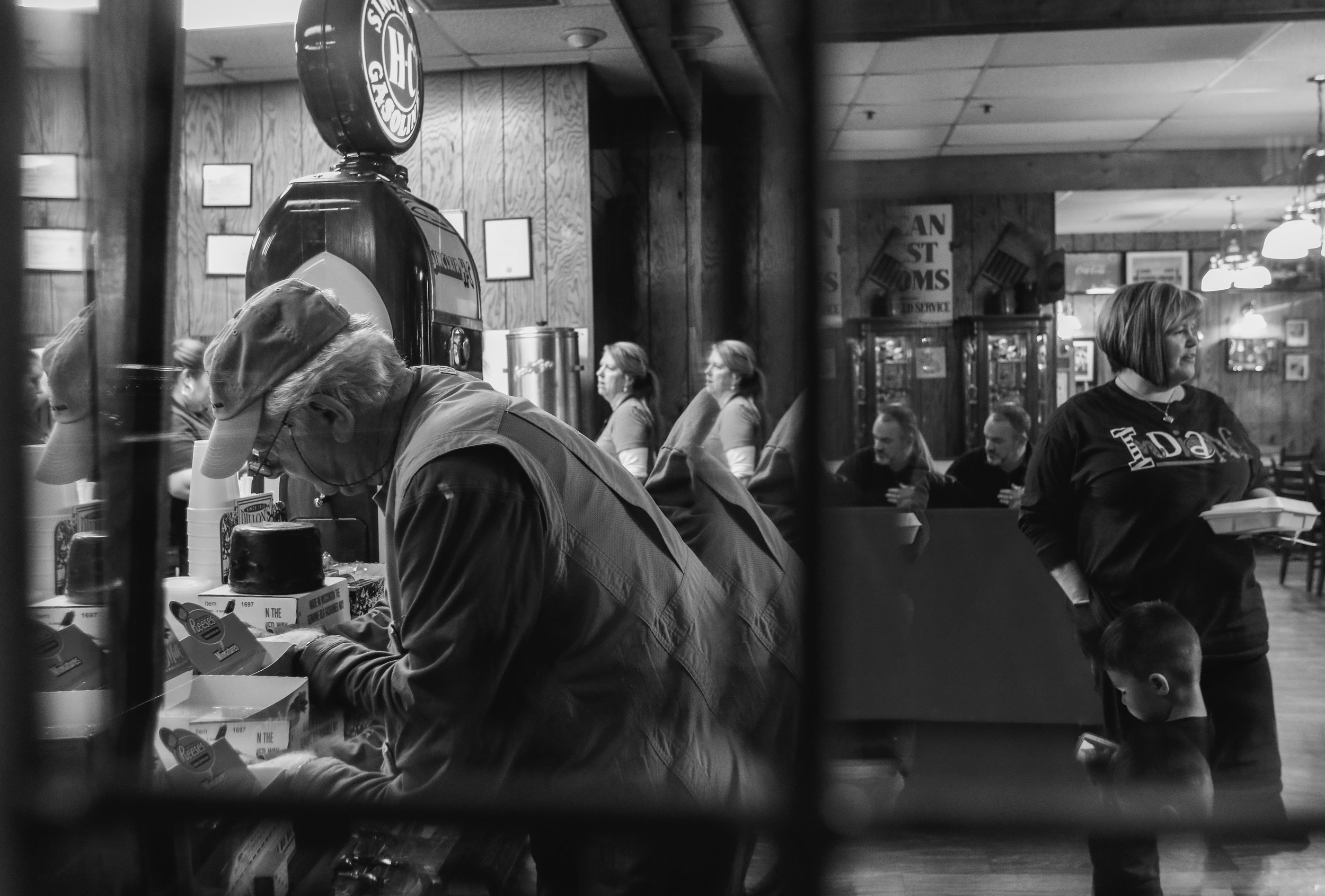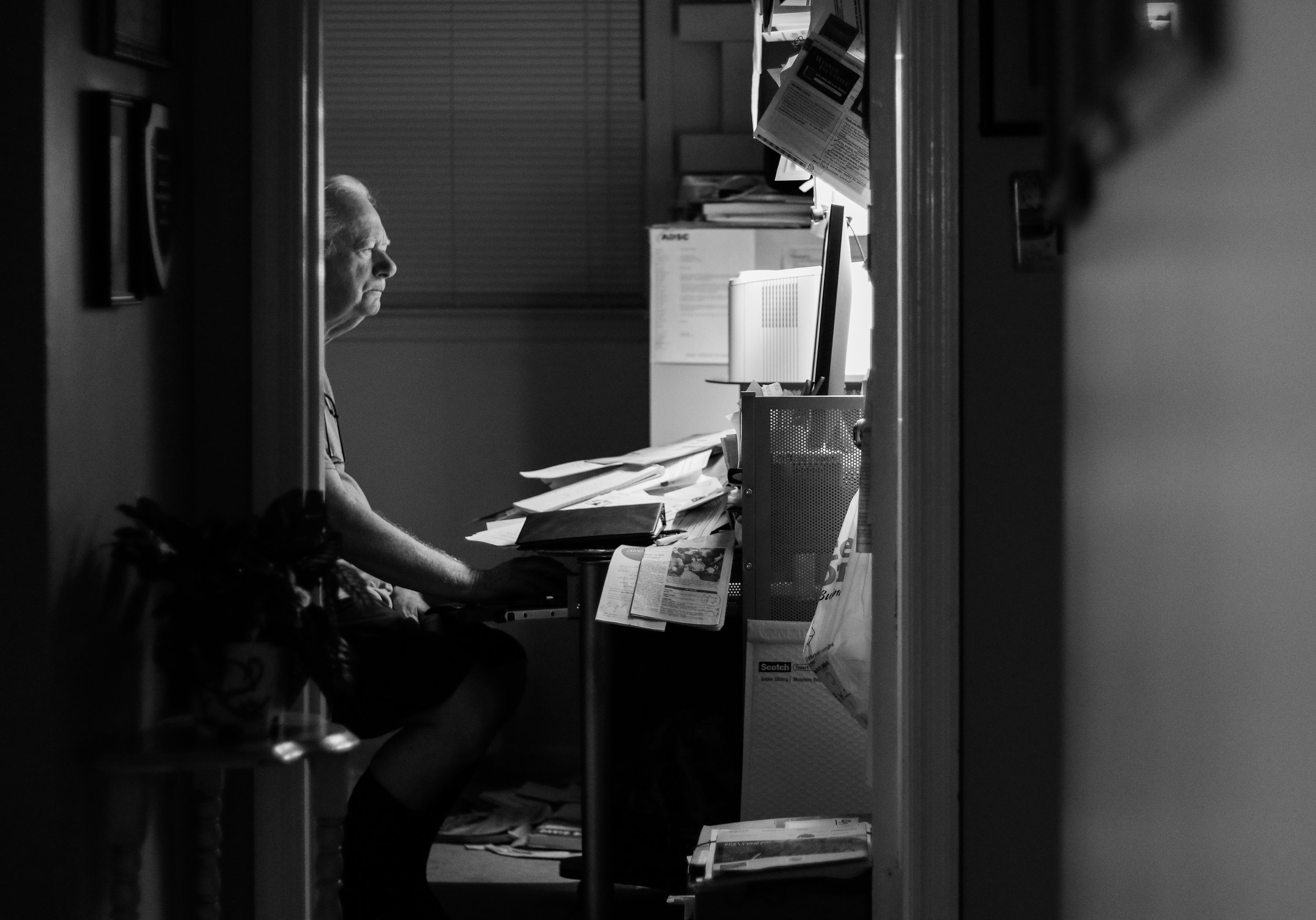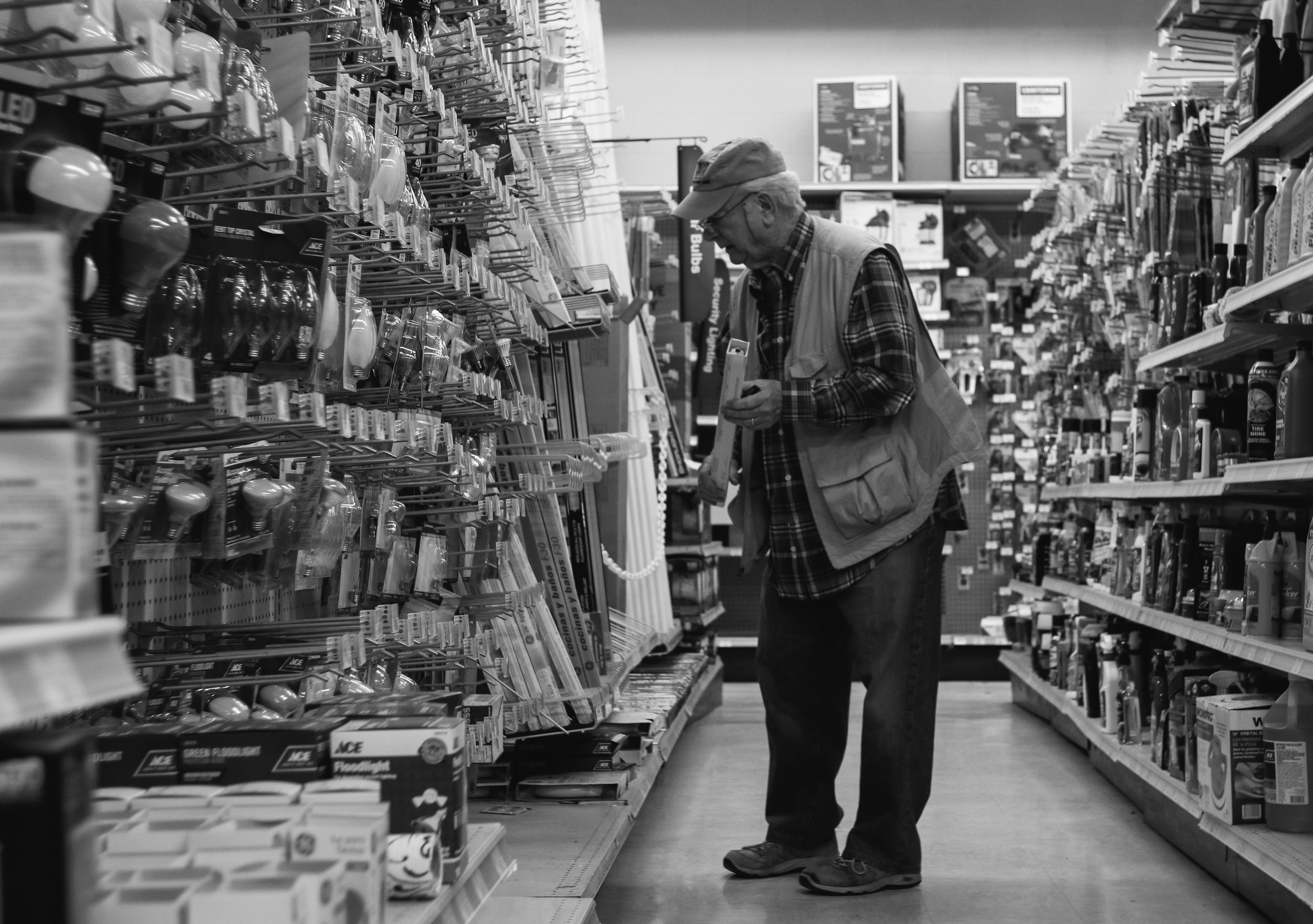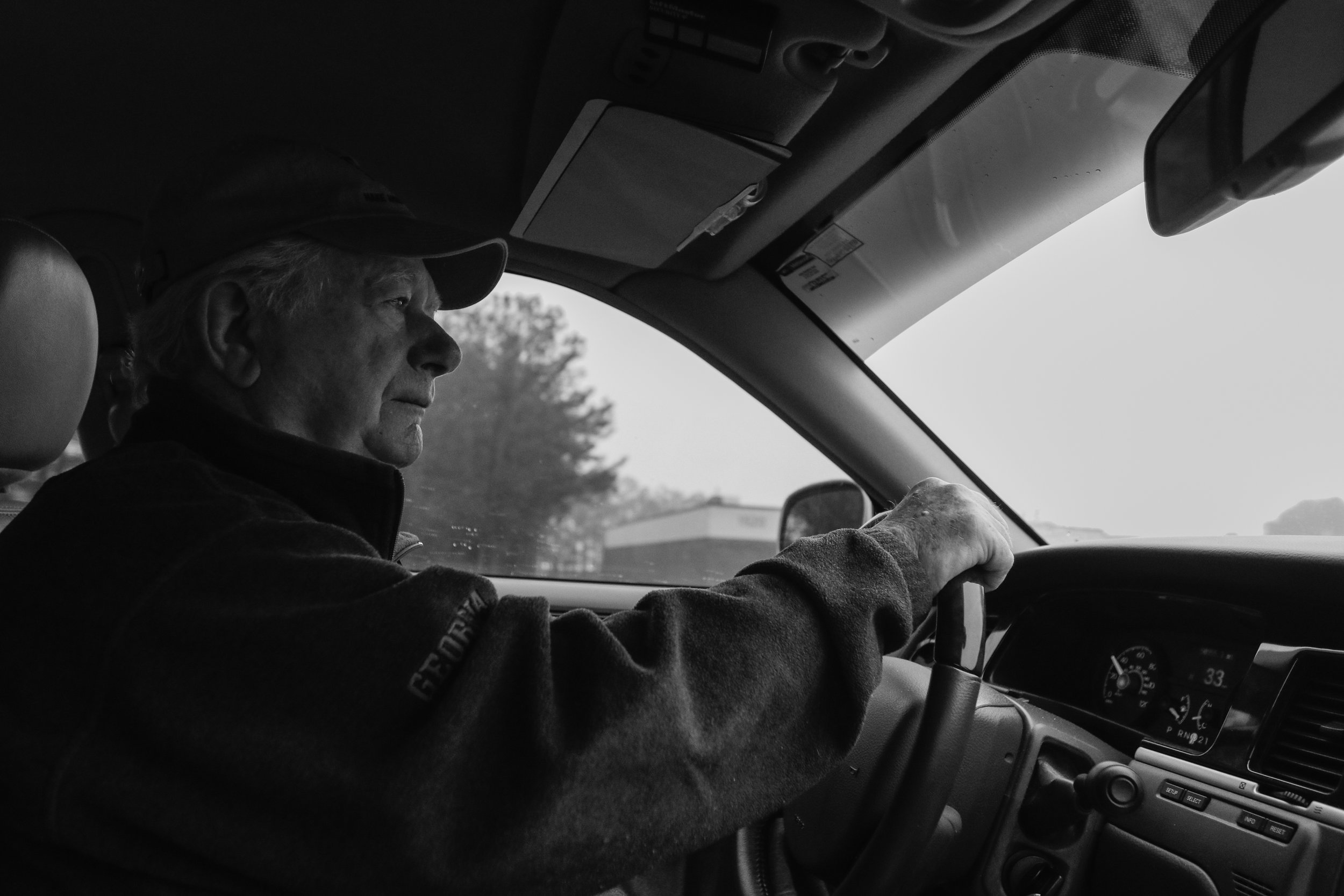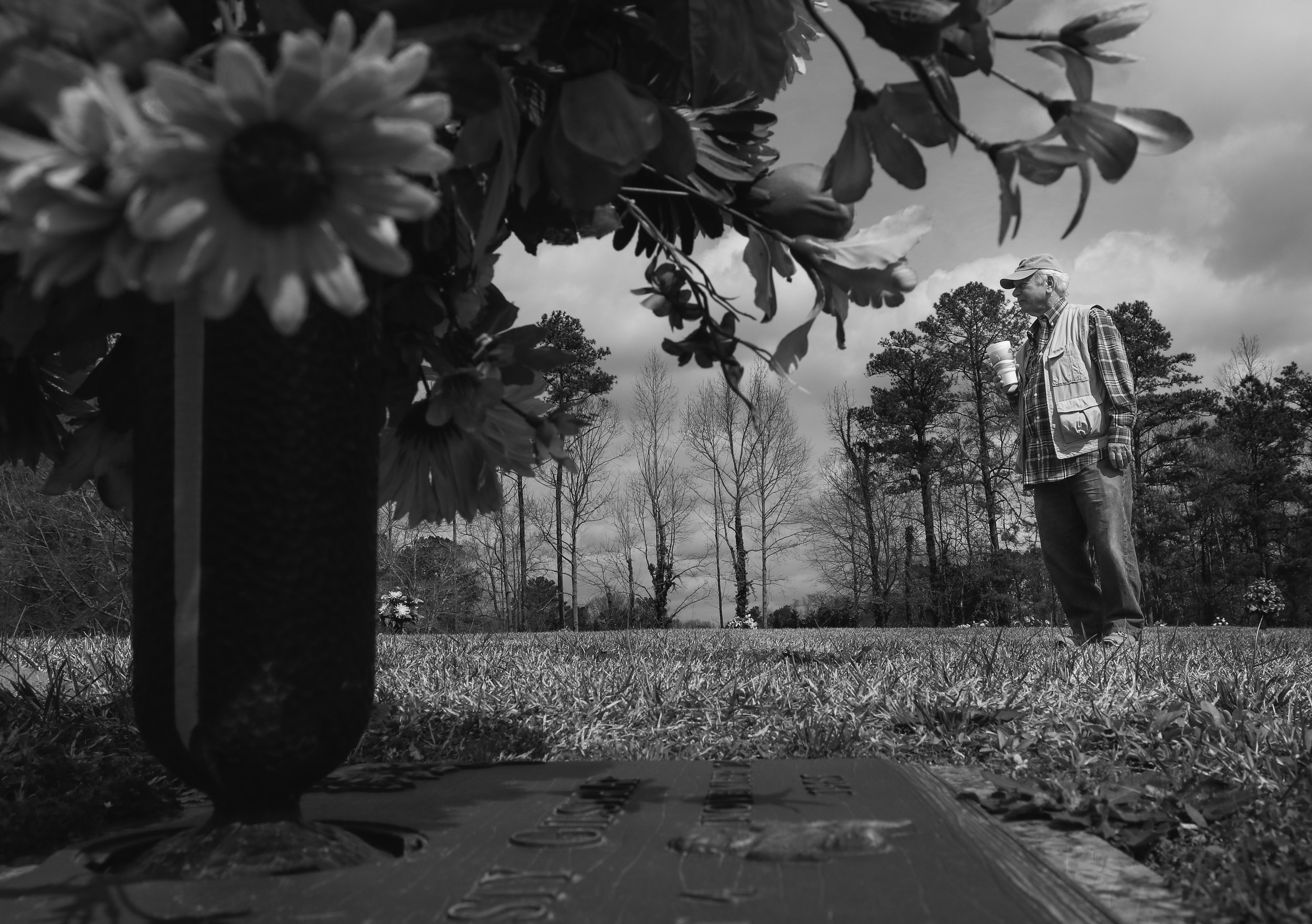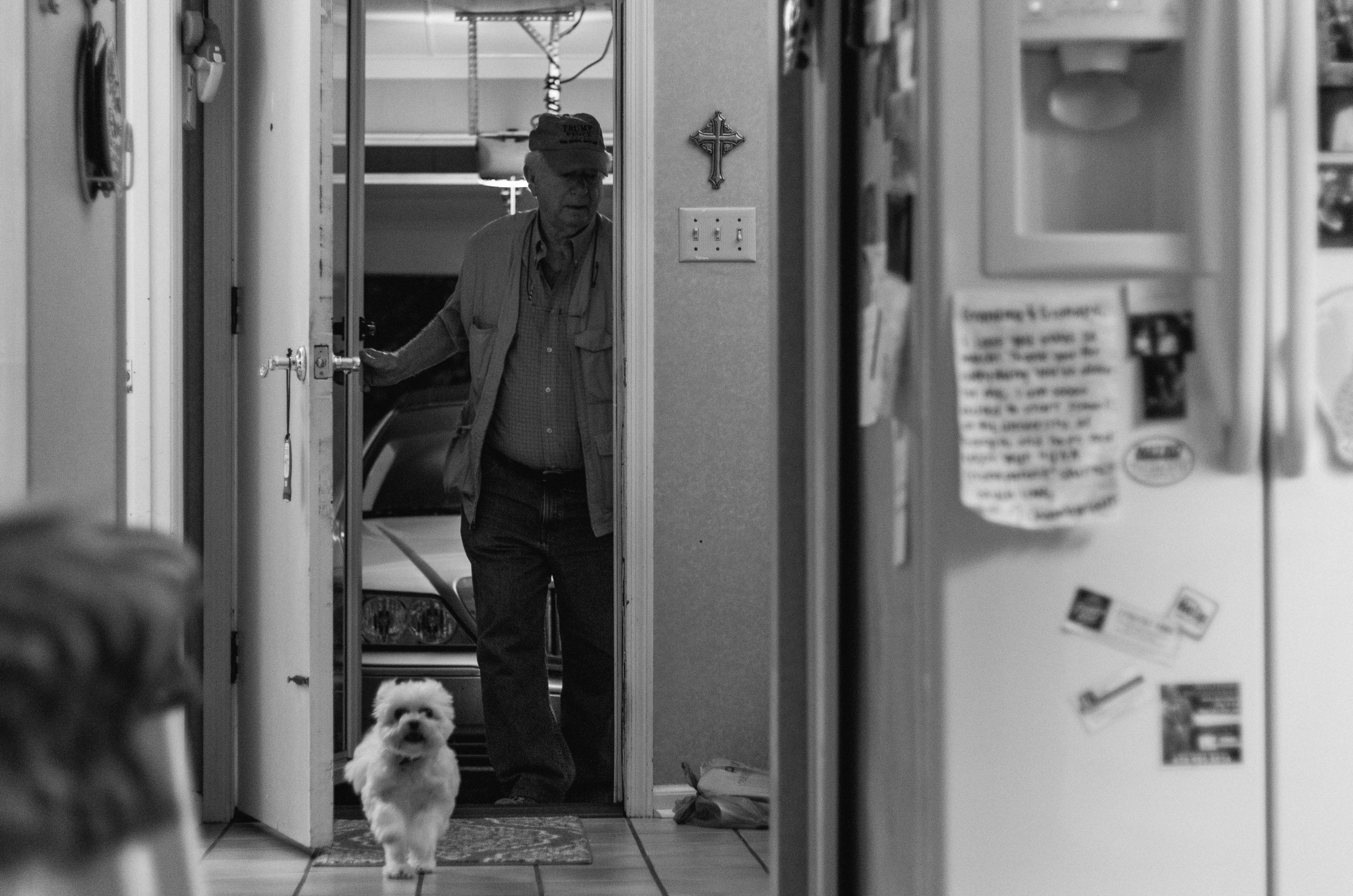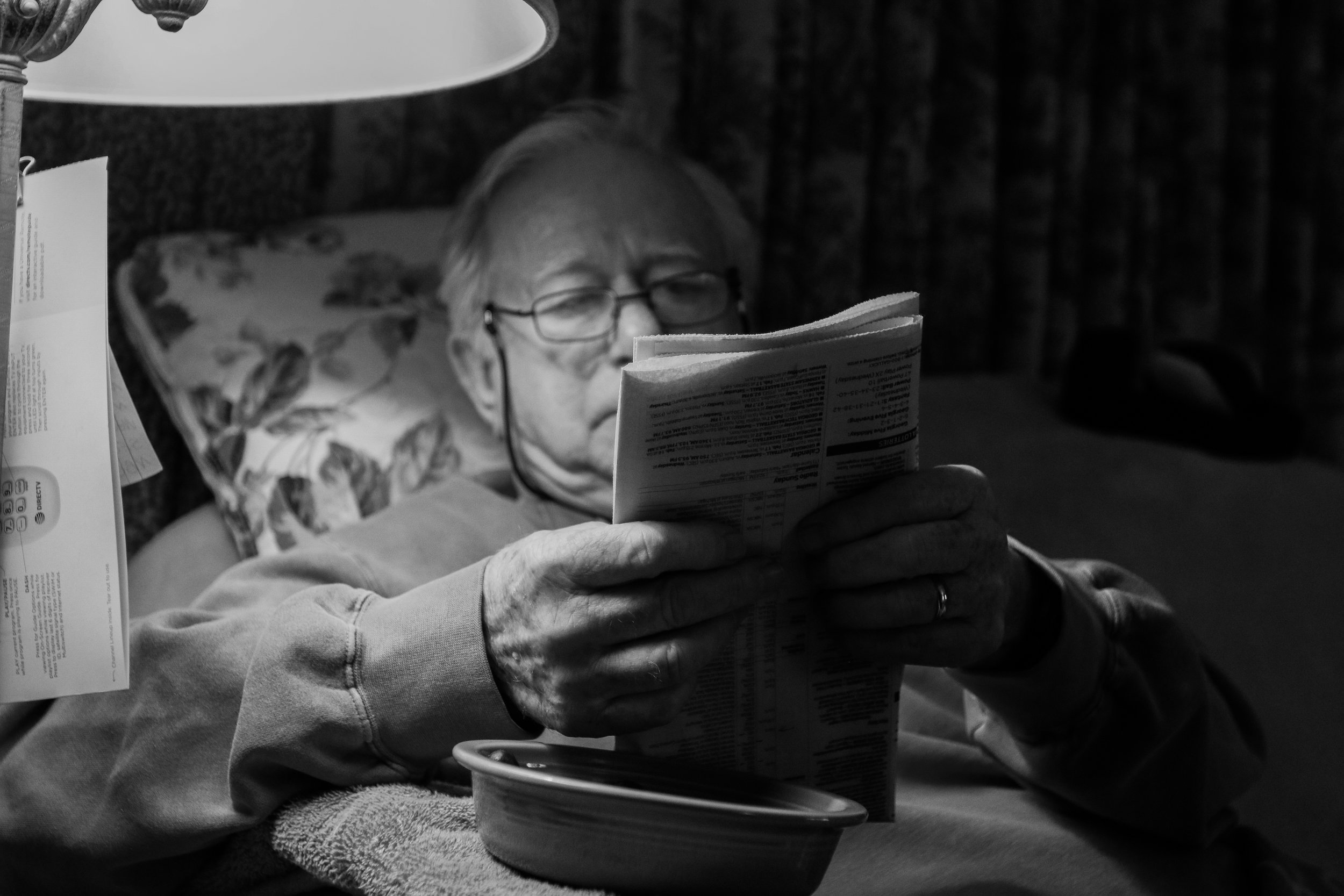As Thanksgiving approaches, we look back at the final six months in the life of Esther Cloud of Lithia Springs, Georgia, and at the first six months of George Cloud’s life as a widower, in photographs, videos and stories by their granddaughter.
Story, photographs, and films by Chamberlain Smith
“Lights coming on,” the nurse warned as she opened the door and flipped the switch, illuminating the room in a harsh glow. I rolled over in the stiff chair where I had been sleeping and pulled the thin sheet over my head to protect my eyes. Time for the hourly vitals check.
This sequence had become routine, a new normal we had no choice but to accept. Nurses coming in and out. Family members alternating days and nights at the hospital to accommodate for work and school schedules. Friends stopping by to offer prayers, condolences, and casseroles, because that’s just what you do when someone is dying.
I groggily sat up and stretched before reaching for the legal pad from the windowsill next to me. My grandpa, George, gave me specific instructions to write down anything and everything the doctors and nurses said while he was away. George is notorious in my family for carrying a yellow legal pad everywhere. It is like an extension of his own body where he transcribed details of his wife, Esther’s, medical history and illnesses. Being able to control and manage a small portion of Esther’s hardships through documentation seemed to comfort him.
Replacing George as scribe was part of the deal we made when I convinced him to allow me to take over “night watch,” so he could go home to shower and sleep in a real bed. I recorded the update. “January 15, 2018, 3 a.m. No changes.” My thin handwriting looked out of place scrawled under his large script that filled the rest of the pad’s pages. I curled back into the chair and attempted to sleep, knowing the same cycle of events would repeat itself in no time.
My grandmother, Esther, had been sick for as long as I could remember, but her medical struggles dated back way before my 21-year lifespan. Parkinson’s disease, degenerative back pain, bipolar disorder, and diabetes only begin to cover her long list of illnesses. For decades, my grandparents endured a rotating schedule of doctor’s appointments, surgeries, and hospital stays. It was an exercise in pain management on a daily basis.
“I don’t know how anyone can go through what we’ve been through for 40 years without holding onto God.” — George Cloud
I began photographing Esther’s medical journey and the lives of my grandparents in late 2017. I grew up watching George care for Esther and had always been amazed by the sacrificial love he demonstrated towards her. George fed Esther, dressed her, styled her hair, applied her makeup and held her hand steady to write when the Parkinson’s got too bad, never faltering on his commitment to their love.
In true Southern fashion, George and Esther’s love story began in church. The year was 1963, and George was home from college for the weekend when he first laid eyes on Esther.
“Sometime in 1963 I saw her in a choir in a church, and I knew right then that I needed to find out more about that young lady, who had a beautiful name… Esther.”
George has always told me he knew Esther was “the one” because of her long eyelashes. He had diligently prayed for a wife with long lashes.
“I knew that it was planned out by God… The telltale clues were the long eyelashes, and the pleasant smile, and the humbleness that she always had for any situation.”
— George Cloud
The two were married on September 11, 1964, during George’s senior year at the University of Georgia. They had three children and built a life together in Atlanta, but not everything was wedded bliss. Esther’s health began to decline shortly into their marriage, and they traveled a long journey of medical struggles in the decades to come.
My decision to photograph my grandparents stemmed from a simple goal: to memorialize the love they shared amid the sickness and pain. I saw the photos as pieces of history and a way to preserve my grandparents’ legacy for our family’s current and future generations. At the time, I had no idea I was recording their last months together on Earth.
I first expressed interest in photography in high school, and George was quick to give me his camera, a Canon Rebel XTi, that he used mainly for taking photos at family gatherings. This gift stirred a passion within me that would eventually influence my college selection and career path. It seemed fitting that the man who first introduced me to photography later became the subject of my images.
When my mom called on January 14, 2018, to inform me that Esther was in the hospital, I didn’t think too much about it. Hospital stays were frequent for her. Every couple of weeks, Esther would be admitted to the hospital for various reasons, stay for a few days, receive treatment, then return home like she always did. Mom encouraged me to make the trip to the hospital, saying things seemed more urgent than usual. I packed a bag, grabbed my camera and drove two hours from Athens to Douglasville, where she had been admitted. I looked forward to the opportunity to spend the weekend with my family, despite the circumstances.
I pulled up to the hospital, parked my car and entered the unfamiliar building, passing walls lined with posters and advertisements featuring smiling faces as I walked into the lobby. I rode the elevator alone to the second floor and wound through a maze of hallways before finally arriving at Esther’s room. The soft hum of machinery became louder as I approached the door. I pushed it open to find George sitting in a recliner, head resting in his hands. On the opposite side of the room, my aunt was draped over the foot of the bed where my grandmother lay unresponsive mere feet away.
I knew, immediately, this time was different.
I learned that Esther had developed pleurisy as a result of gallbladder removal surgery one month before being hospitalized. Antibiotics to treat the surgical side effects had sent her into kidney failure and left her in a lethargic state.
Days began to blur together, and the hospital quickly became my immediate family’s home. Distant and close friends and relatives came and went, dropping off food and offering conversation. Many times, we clasped our hands and gathered around Esther’s bed to pray for miraculous healing, lifting pleas to God for her recovery. George could often be found pacing around the room and hallway in what seemed to be an attempt to keep his mind off things. Day after day, he wore the same plaid shirt, the one Esther gave him for Christmas three weeks earlier, refusing to change into anything else.
My initial plan to continue photographing the interactions between my grandparents had turned into something else entirely: capturing the final days of their life together.
As the images I was making became increasingly serious, somber, and emotional, I asked George if he wanted me to continue documenting what was going on. He told he was honored I wanted to preserve the final memories we were sharing as a family and gave me his blessing to proceed.
Behind the camera, I felt the same emotions my family experienced in front of it: helplessness, anger, sadness. Photography helped me process the situation and provided me with a sense of comfort. The camera was my yellow legal pad.
My tears flowed only when I was alone in the hospital parking lot, hidden in the privacy of my car. When I looked up from the driver’s seat, I easily spotted Esther’s unmistakable room window, covered entirely in newspapers from the inside. George took it upon himself to complete this task just in case Esther were to awake and be bothered by the glare. She never did.
Esther died in hospice care on January 20, 2018, surrounded by her loving husband and three daughters. At the time of her death, I was in town, keeping my younger sisters and cousin occupied and away from the hospital. I had a gut feeling Esther had passed away, and I received a message from my father shortly after, confirming my suspicions. I gently relayed the information to the family members I was with, and we immediately went to George’s house to wait for his return that evening. When I first saw George after Esther’s passing, I was at a loss for words.
All I could bring myself to do was hug him and whisper, “I love you, Grandpa.”
Since the death of his wife, George keeps busy reading the newspaper, watching sports and playing online checkers at their home in Lithia Springs, Georgia. He often eats at his favorite restaurants, Waffle House, Cracker Barrel, and Wallace Barbecue, where he is known and loved by every server. His kind, nurturing energy is spent writing weekly letters to his 10 grandchildren, drafted on his iconic yellow legal pad, and caring for Molly, the Maltese he purchased as a gift for Esther four years ago.
“The way my life is now after Esther passed, I seem to have a lot of time on my hands.”
— George Cloud
George and I talk on the phone every week. When I called him on a February afternoon, the conversation naturally drifted to Esther. I brought up the possibility of publicly sharing these photos and asked how he would feel about it. My original intended audience was only close friends and family, so the thought of sharing this story with the world made me hesitant. I was worried he or my family might feel like their pain was being exploited and offered to refrain from publishing anything if he had reservations.
I could hear him getting choked up as he said to me, “Babydoll, don’t you dare feel that way. I am so proud of you and what you are doing, and I know your grandma would be, too.”
Since that conversation, I have seen and spoken to George numerous times, and he never fails to let me know how proud he and Esther are of me. He continues to mail me weekly letters of encouragement and inspiration, consistently signed “Love always, Grandma (in spirit) and Grandpa.”
September 11, 2018, marked George and Esther’s 54th wedding anniversary and George’s first as a widower. He celebrated with dinner at one of Esther’s favorite restaurants and ended the evening at home in his living room, sitting with Molly in his favorite chair. He told me he often found himself sitting there for hours at a time to think. When I asked what he thought about for hours, his answer was simple: good memories.
Chamberlain Smith is a recent graduate of the University of Georgia Grady College photojournalism program. Her passion lies in visual storytelling and capturing raw, honest moments with a camera.


















